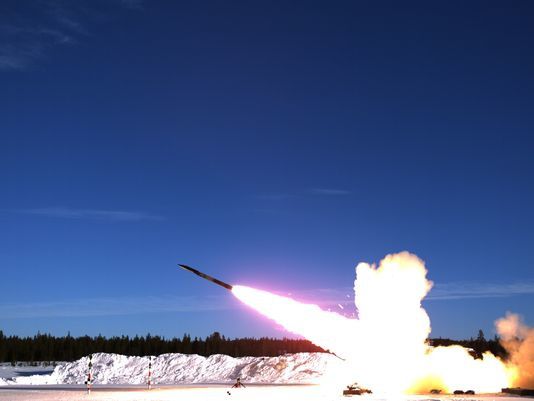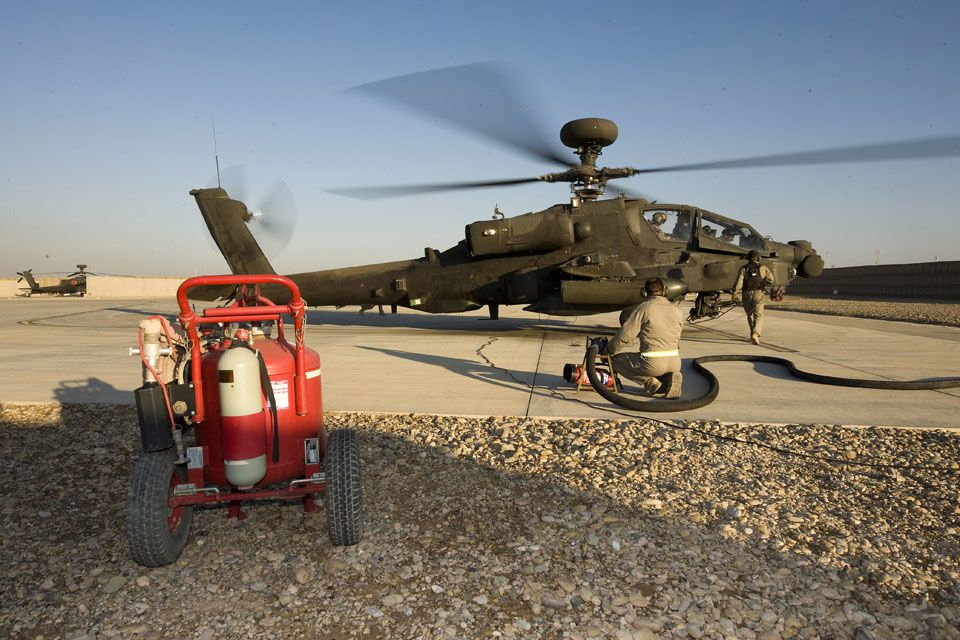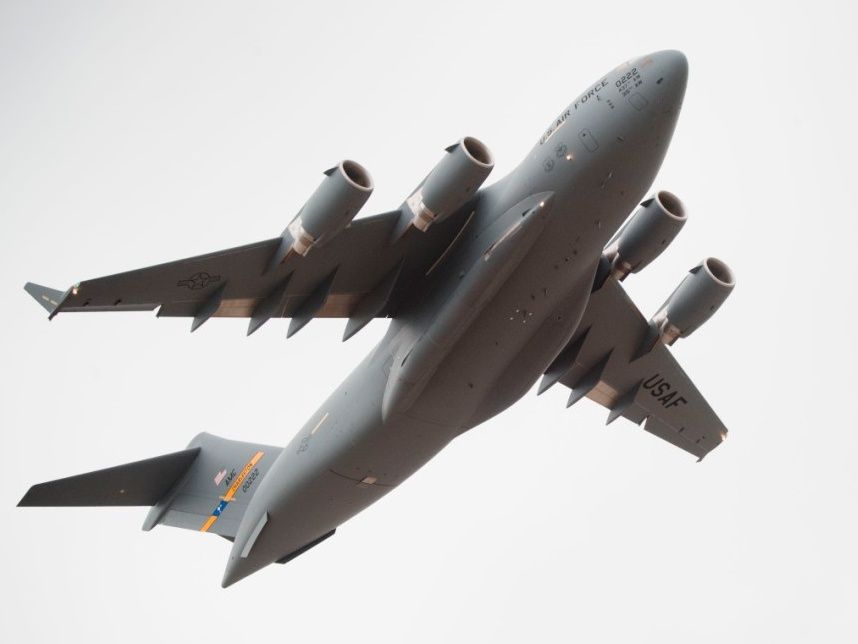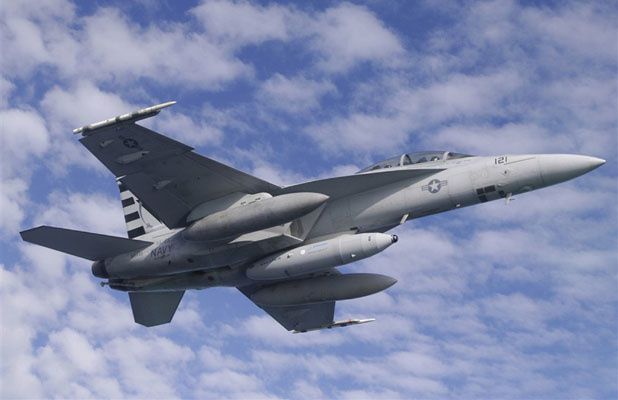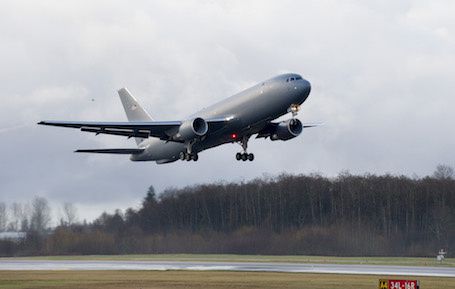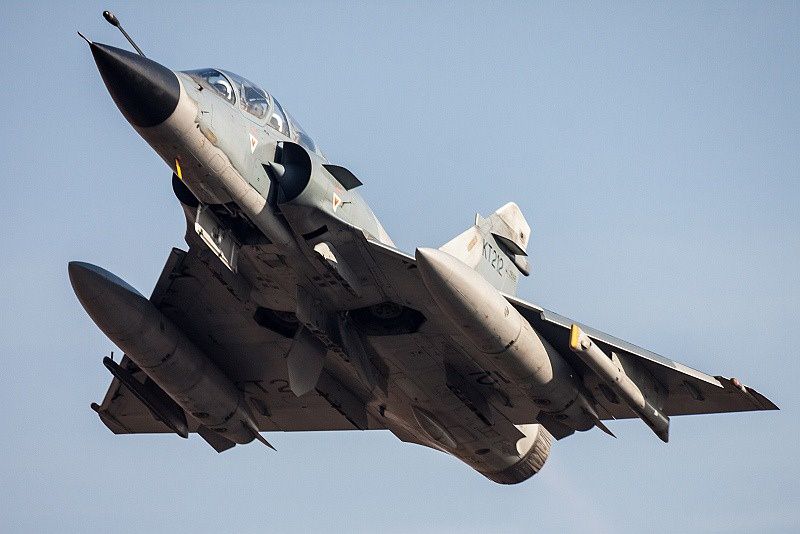Boeing and Saab test their new Ground Launched Small Diameter Bomb concept in Feb. 2015.(Photo Boeing)
March 10, 2015 By Aaron Mehta – Defense News
WASHINGTON — Boeing and Saab have teamed up to develop a Ground Launched Small Diameter Bomb (GLSDB) program, with three successful test launches of the new system completed last month.
The three tests, conducted at a range in Sweden, proved that the Boeing and Saab design could successfully launch a SDB weapon from the ground, sync up with GPS and guide the weapon to its target, opening up what Beth Kluba, vice president for Boeing Weapons and Missile Systems, called "all-angle, all-aspect attack."
The system essentially sticks a GBU-39B small diameter bomb, widely used by the US military and a number of international customers, on the front of a M26 rocket. The M26 is set to be demilitarized by 2018 under a set of cluster munitions treaties, meaning the GLSDB program would essentially be recycling an item that countries were planning to stockpile or scrap.
The weapon is designed to be launched out of a multiple launch rocket system (MLRS), used by a number of US allies already, avoiding the need to design a new launch system. That MLRS can hold six weapons per pod, with two pods per vehicle.
Executives from the two companies are positioning the system as a low-cost product that meets a requirement gap by combining off-the-shelf products.
Video of Boeing's Ground Launched Small Diameter Bomb
"These are technologies that are already in use," Kluba said. "It's off-the-shelf technology. That really drives the risk down for this new capability."
Once launched, the SDB acts as any air-launched SDB would, which means ground-based commanders now have 360-degree coverage. The weapon can do both high and low angles of attack, fly around terrain to hit targets on the back of mountains, or circle back around to attack a target behind the launch vehicle.
Range-wise, the GLSDB can hit targets 150 kilometers in front of the launcher or 70 kilometers behind it.
While declining to put a price range for the system, Kluba said it will be "very affordable" and comparable in price to anything the MLRS currently uses. She also predicted an 18- to 24-month delivery time from when a contract is signed to when the system would be fielded.
"This is not developmental, it's not PowerPoint," she said. "It' hardware, it exists, and through our investment we're able to bring this capability to the war fighter very quickly."
That investment she mentions is all internal R&D spending, something split between the two companies.
According to Kluba and Saab North America President Michael Andersson, there are ongoing discussions with a number of customers, including several who were present for the weapon tests in February. While Kluba confirmed the US Army is looking at the system, she declined to identify other customers.
Boeing actually began development of the GLSDB system in 2011, but dramatically sped up the process once Saab signed on as a partner in August.
Both executives also declined to go into details of how the investment has been split between the two companies. However, it is clear that a big part of Saab's role will be to help sell the system to nations overseas, something in line with previous Boeing teaming efforts.
"From Boeing's point of view, this was something we wanted to do and we were moving towards that goal," Kluba said. "As we conducted out various reviews, we saw an opportunity, because we have a relationship in place with Saab, and as we were looking at the market and how to be most successful in penetrating the global market, we saw an opportunity."
"We view ourselves as equal partners," Andersson said. "We're bringing different skills and capabilities to the program, and that ranges from engineering production, testing and also marketing."
Andersson added that there are 10 potential initial customers identified by the companies, adding that this is a program that could exist even if the US does not buy in.
"Looking at the international coalition partners, this is a very important capability," he said. "In the US context it may be more complimentary. Here it is a unique capability that they haven't had access too, and that's really important in terms of looking at the broader market."
commenter cet article …


